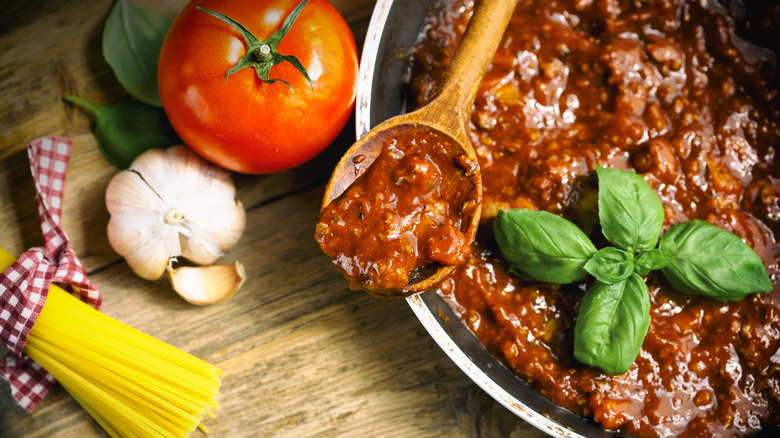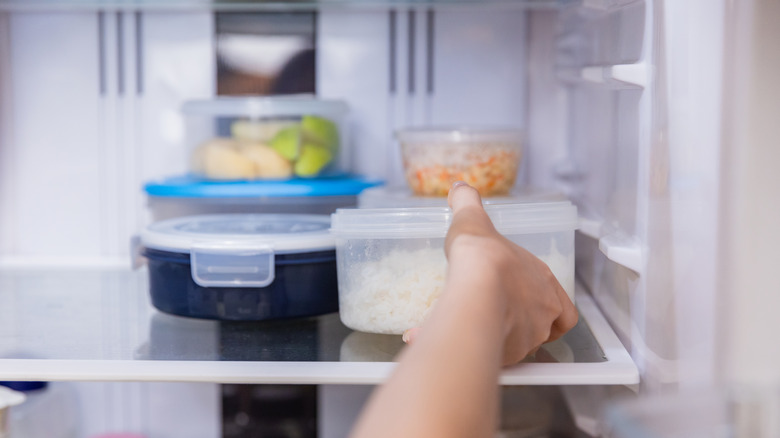How To Properly Store And Reheat Frozen Meat Sauce
Sometimes, when you have no energy to think about what to make for dinner, it helps if there is already something in your fridge or pantry that you can fashion into a scratch meal. Sure, canned tuna can be dressed up into a nicoise salad and frozen dumplings are always handy but nothing beats a hearty ragù, bolognese or its less appealing-but-still-tasty-sounding variation, meat sauce, to pour on pasta and other carbs.
Let's use "meat sauce" as the umbrella term here to encompass a tomato-based sauce simmered with ground meat, alliums and herbs. Maybe there's bacon, carrots, celery thrown in for extra flavor too. This sauce is time consuming to make and often made in bulk, which is why it makes sense to freeze it for future use.
Accordingly to FoodSafety.gov, cooked meat leftovers can last four to six months in the freezer at 0 degrees Fahrenheit. But there are other considerations on how to store it, defrost it, and reheat it, so that you can safely consume the food.
Choose the right time and container to freeze the meat sauce
Freezing food sounds simple enough, but because of the omnipresence of food poisoning bacteria, agencies like Food Standards Australia New Zealand classify cooked food with meat as "potentially hazardous" if not stored at correct temperatures.
So what are the best practices? It is important to let the sauce cool down first, which can take anything from two to three hours, depending on the room temperature. If you put hot meat sauce in the freezer, you risk raising the temperature of the freezer; frozen food requires a constant temperature of 0 degrees Fahrenheit.
The next step is to find a suitable container to store the sauce. Use single-serve, air-tight containers for two reasons. First, the small batches means you can easily defrost the sauce based on the number of serves you need rather than defrosting a large chunk that might go to waste. And second, air-tight containers means the food is less likely to get "freezer burn", which happens because of the loss of moisture.
Always defrost the meat sauce before heating it up
There are a few ways to defrost the meat sauce and the best way is also the longest: let it thaw in the refrigerator for 24-48 hours. This requires some planning ahead but it is a good way to ensure that the food defrosts consistently, rather than having an ice block in the center.
If you do not have the time, you can run the container of meat sauce under cold water (never hot water) until it thaws. Alternatively, use the defrost option in your microwave and remember to stir the food every few minutes. To get it to be piping hot (or at least 165 degrees Fahrenheit), you can heat it up in the microwave again in bursts of 30 seconds as this will differ by appliance. You can also heat it up on a saucepan on the stovetop, if you do not mind washing the extra pan.
Even if you followed all these recommendations and steps diligently, you should still double-check to ensure the cooked meat sauce hasn't gone bad. Look for an "off" odor and the flavor or the presence of mold, which means it should be dumped.


